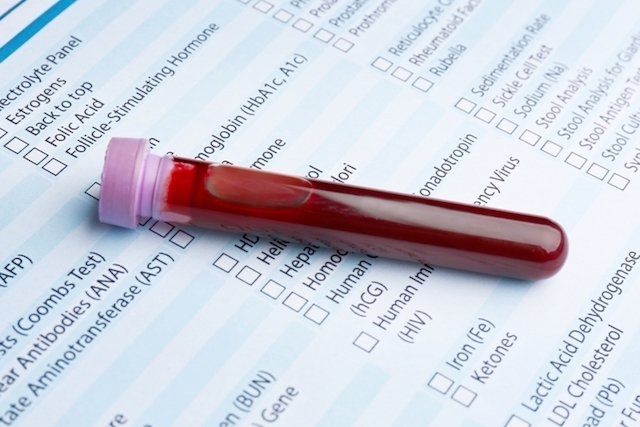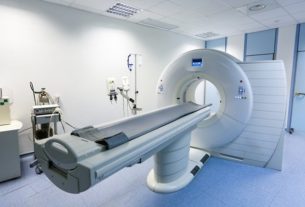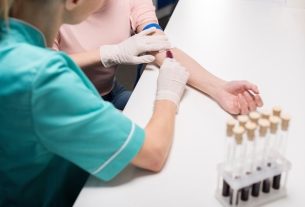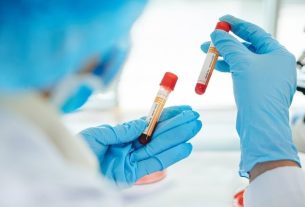The estradiol test measures the levels of this hormone in the blood and is mainly indicated to evaluate the functioning of the ovaries, investigate the cause of problems such as infertility or absence of menstruation and monitor the treatment of menopause in women.
Estradiol, or E2, is a type of estrogen and, although it is the main sex hormone in women, being responsible for the development of female sexual characteristics, it is also present in men, however, in smaller quantities.
Read too: Estradiol: what it is, what it is for and when it is high or low
tuasaude.com/estradiol
The levels of this hormone are normally higher in women than in men and its blood levels can also vary in women, according to the phase of the menstrual cycle, and it is recommended to consult an endocrinologist in case of changes.

What is it for
The estradiol test is indicated for:
- Investigate the cause of problems such as absence of menstruation, infertility and precocious puberty;
- Complement the assessment of menopause symptoms;
- Assess the functioning of the ovaries and egg reserve;
- Monitor estrogen hormone replacement therapy;
- Monitor the response to treatment of some fertility problems.
Although this exam is mainly indicated to investigate health problems in women, in men it can help the doctor identify the cause of gynecomastia, which is enlarged breasts in men, and changes in libido, for example.
Read too: Gynecomastia: what it is, symptoms, causes, types and treatment
How to prepare for the exam
Generally, no special preparation is necessary for the estradiol test. However, there are medications, such as some antibiotics, corticosteroids and contraceptives, that can alter their levels in the blood and, therefore, the doctor may recommend that they be avoided.
Reference values
The reference values for estradiol in the blood are:
- Adult men: between 11 and 46 pg/mL;
- Women in the follicular phase: between 22.2 and 218 pg/mL;
- Women during the ovulatory period: between 40.3 and 511.3 pg/mL;
- Women in the luteal phase: 25.3 and 288.6 pg/dL;
- menopausal women, without hormone replacement therapy: up to 47 pg/mL.
Furthermore, up to 10 years of age, values below 20 pg/mL for boys and between 6 and 27 pg/mL for girls are considered normal. However, reference values may also vary depending on the laboratory in which the test was carried out.
Other factors, such as age, sex, health history and phase of the menstrual cycle, in women, can also affect estradiol levels in the blood and the doctor usually also takes into account the results of other tests when interpreting them.
What can be high estradiol
High estradiol can be caused by:
- Onset of puberty in girls;
- Use of medications that contain estrogen;
- Ovarian stimulation, in preparation for fertilization in vitro;
- Tumor in the ovary, testicle or adrenal gland.
Especially in the case of fertilization in vitro, high estradiol levels are typically associated with preparing for egg collection. Furthermore, menopausal women who take hormone replacement therapy also generally have higher estradiol levels than women who do not take the treatment.
Read too: Hormone replacement therapy: what it is, what it is for and how it is done
What can be low estradiol
The main causes of low estradiol are:
- Menopause;
- Problems in the functioning of the pituitary gland;
- Anorexia or rapid weight loss;
- Polycystic ovary syndrome;
- Some medications used to treat breast cancer.
Low estradiol levels can be linked to fertility problems in women and, especially in young women, can sometimes indicate early menopause, also known as premature ovarian failure. Know which diseases can cause infertility.
Bibliography
- STANCZYK, Frank Z; CLARKE, Nigel J. Measurement of Estradiol—Challenges Ahead. The Journal of Clinical Endocrinology & Metabolism. Vol.99, n.1. 56–58, 2014
- UNIVERSITY OF ROCHESTER MEDICAL CENTER. Estradiol (Blood). Available at: <https://www.urmc.rochester.edu/encyclopedia/content.aspx?ContentTypeID=167&ContentID=estradiol>. Accessed on 20 Feb 2024
- UCSF. Estradiol blood test. Available at: <https://www.ucsfhealth.org/medical-tests/estradiol-blood-test>. Accessed on 20 Feb 2024
- MEBES, I. et al. High Estradiol Levels During Postmenopause – Pitfalls in Laboratory Analysis. Obstetrics, gynecology. Vol.75, n.9. 941-944, 2015
- KETHA, Hemamalini; GIRTMAN, Adam; SINGH, Ravinder J. Estradiol assays–The path ahead. Steroids. Vol.99. 39-44, 2015

Sign up for our newsletter and stay up to date with exclusive news
that can transform your routine!
Warning: Undefined array key "title" in /home/storelat/public_html/wp-content/plugins/link-whisper-premium/templates/frontend/related-posts.php on line 12
Warning: Undefined array key "title_tag" in /home/storelat/public_html/wp-content/plugins/link-whisper-premium/templates/frontend/related-posts.php on line 13



